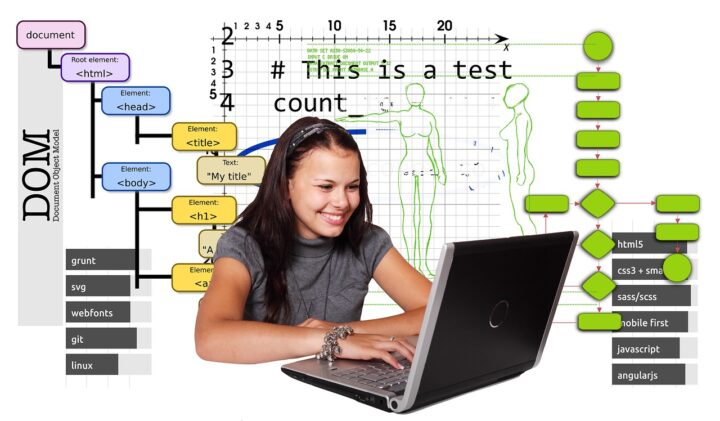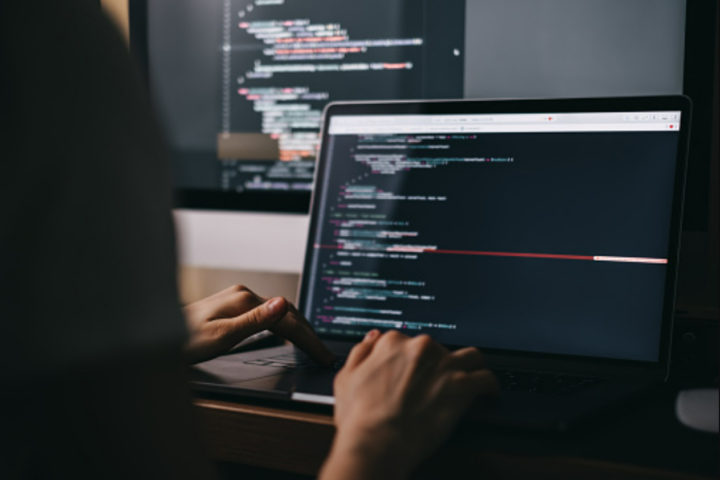When we start programming, everyone tells us how to use a language. They teach us Java, C++, and many others, but they never tell us how to program. We know how to use the language, but it takes a lot of practice and technique to say that we are good programmers.
Throughout your career, you’ll learn handy things about implementing a project. There are several points that, little by little, get into your head and that you end up using without realizing it. You learn a lot with the experience of different jobs and reading on the subject.
You learn to program by programming

You can’t get enough theory! When learning a programming language, we must know its basic principles: syntax, structure, or variable declaration. We will learn to program when we get stuck with the code. Do you want to know about Android? Make an app? Make a Web page.
It may seem obvious, but many people get lost among books and documentation when they want to learn to program and forget the essential thing: programming.
Going into all the details of programming and learning the whole process gradually, we are faced with various tasks that are sometimes difficult to solve alone. Many beginners need programming homework help, such as coding projects, complex assignments, etc. You can get advice from a specialist or ask an expert to do the difficult task for yourself to learn and practice more without getting stuck on something challenging.
Use version control
When doing a project with a working version, forget to copy the whole folder and paste it somewhere else as “Working project.” What happens if we work with other programmers? What happens if our hard drive crashes? How do we see the evolution of the project or undo specific changes?
Using version control is perhaps the most important thing.
Test the code daily
Always try to test the code under different conditions — colleagues’ computers or another one of yours to see if everything is working correctly.
Have a bug database
When programming a project, it is essential to have an error database, for example, in an Excel file. You can use Google Drive if you are several programmers and want to have it in common easily. These databases can be very simple or very complex.
Steps to follow to reproduce the bug: we need to know what the user has to do to bring the bug to light. You may not be the one who has to fix it, so let’s make it easy for the colleague with detailed instructions.
Fix bugs before writing new code
The task of fixing bugs should be a fundamental part of project planning. It is like a snowball that gets bigger and bigger. When there is a bug, whether it is more or less severe, you have to fix it before developing anything new and not leave it for another day because you don’t feel like it. Sometimes the customer wants you to keep moving forward with the project no matter what, but try to convince him that there are more important things to do.
Not looking back at our code can be a big problem. Patching code to avoid having to fix root bugs is something we should never do. Fix everything first, and then move on.

Plan the project
Take a notebook and a pen. Draw, make sketches, and write down what your program has to do in a task list. Meet with the client and write down what they tell you, brainstorm and try to reach an agreement on the priorities of the various features of the project.
It is by no means a waste of time to plan a project. If you sit down to program as soon as you come up with the idea, the most likely thing is that it will go wrong, and you will reach a point where you will not know where to go from there.
By planning a project with deadlines (deadlines), we will also be able to distinguish the most critical tasks and functions that our program has to perform and leave aside the secondary ones, which may be implemented later.
Buy the best equipment you can afford
Neither the camera makes the photographer, the racket the tennis player, or the computer the programmer, but something helps. This point is something (relatively) material, it does not have much to do with the methodology to follow during code development, but it does have a lot to do with productivity.
Other peripherals are also necessary, like the keyboard or mouse. You can either use the laptop’s keyboard or a basic external one that works well. The mouse is a wireless one that you use very little. Keyboard shortcuts are your friends.
Conclusion
No programmer can be the smartest, and no code can be the perfect one. We are all learning from our own mistakes. We are making our headway, improving day by day. So, in consequence, we can consider ourselves good programmers if only we put a lot of effort into our work.

















